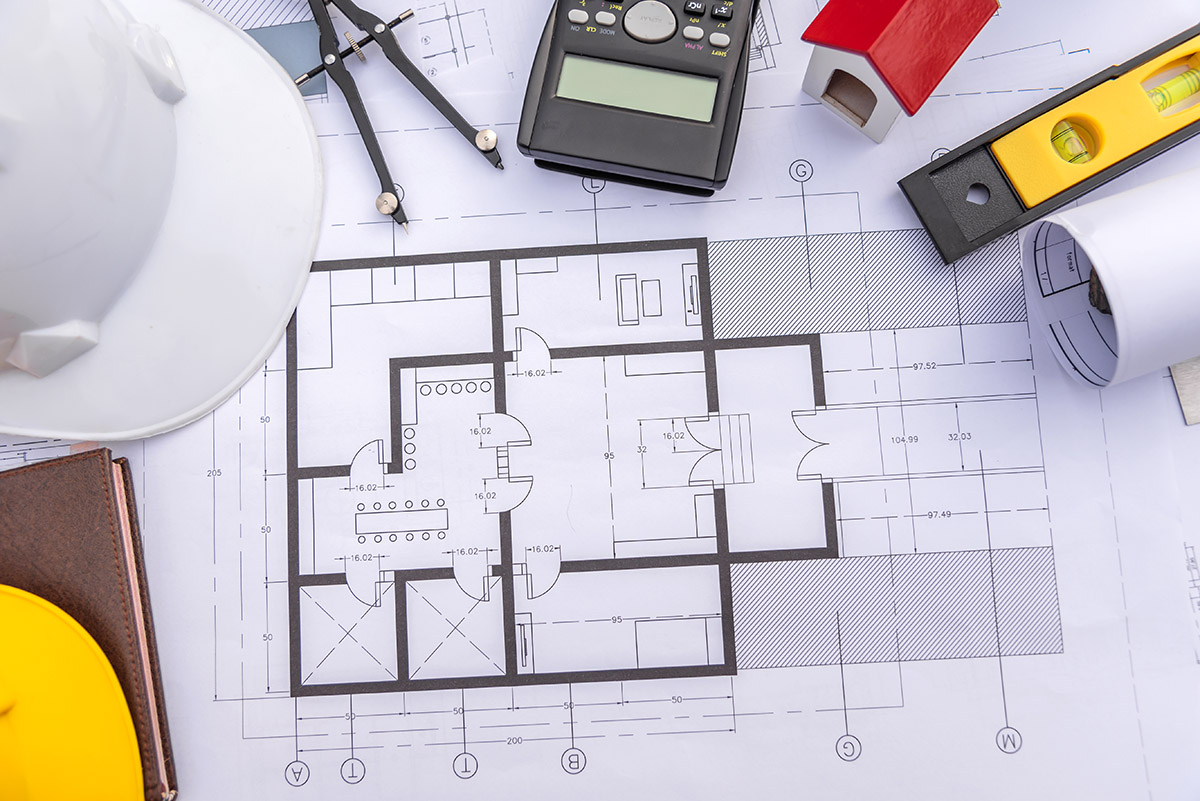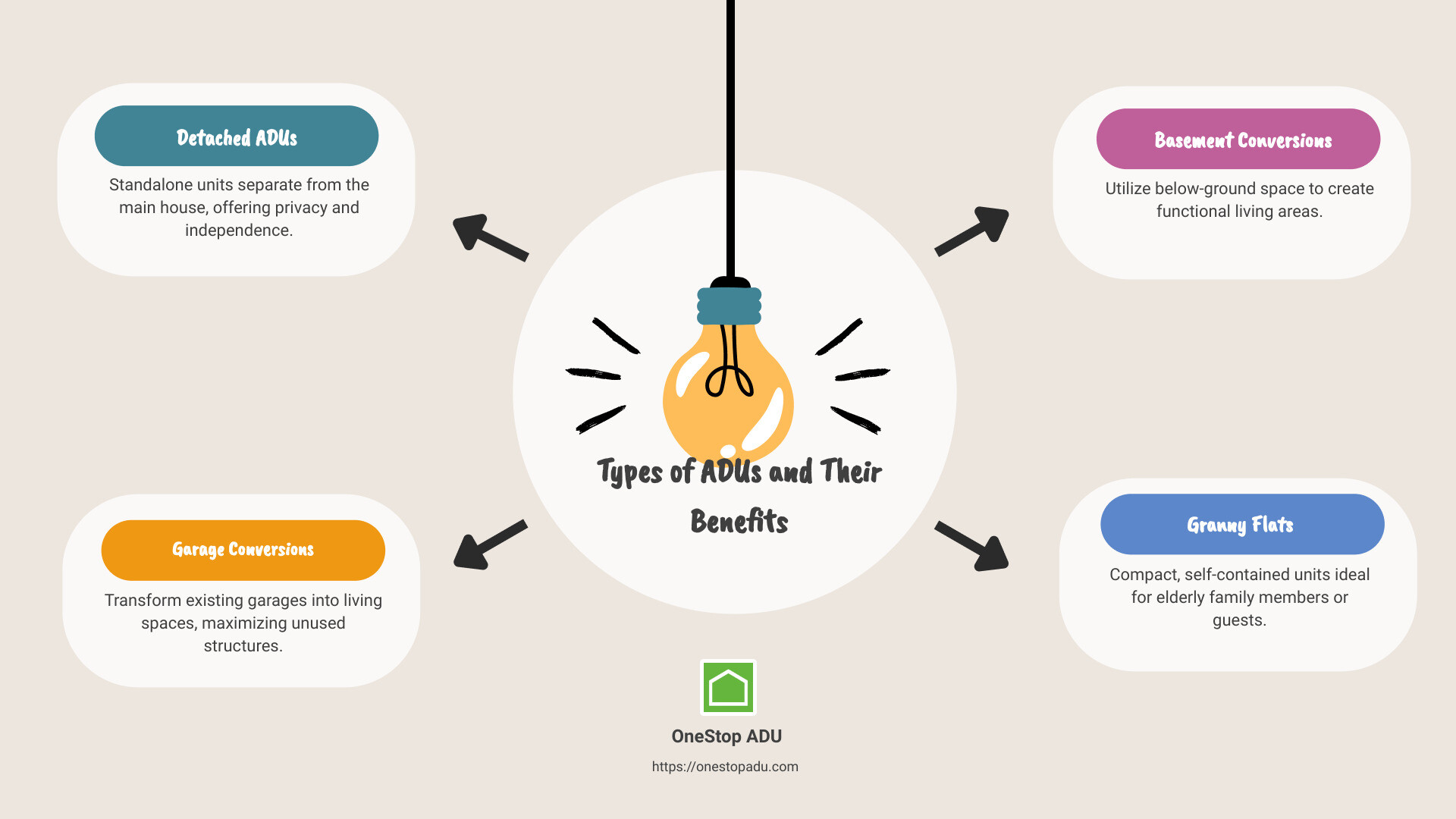
ADU housing, also known as Accessory Dwelling Units, is transforming how we think about home and community living. ADUs are secondary housing units on single-family residential lots. They can take many forms, like backyard cottages, garage conversions, or basement apartments.
Quick facts about ADU housing:
– ADUs are smaller units adjacent to a primary home.
– They can provide rental income or extra living space.
– ADUs help address housing shortages in urban areas.
With the ongoing housing crisis, cities are struggling to provide affordable homes. ADUs offer a smart solution by maximizing the use of existing residential lots. They are popular because they meet the demand for smaller, more affordable living spaces.
For instance, in Portland, Oregon, ADUs have become a go-to method for increasing housing density without changing neighborhood character. Similarly, California’s progressive laws are making ADU development easier. Homeowners can now build these units more swiftly and at lower costs.
The Rise of ADU Housing
ADU housing is transforming neighborhoods across the country, thanks to new laws, zoning changes, and population growth. Let’s dive into how these factors are shaping the future of housing.
Legislation: Making ADUs Easier to Build
Recent laws are making ADUs more accessible. California is a prime example. The state passed laws that streamline the permitting process and reduce fees. This makes it easier and cheaper for homeowners to build ADUs. As a result, cities like Los Angeles and San Diego are seeing a surge in ADU development.
The Housing Choice Initiative in Massachusetts also made it simpler to pass zoning changes. Now, only a simple majority vote is needed, instead of a two-thirds supermajority. This change is encouraging more cities and towns to adopt ADU-friendly regulations.
Zoning Changes: Breaking Down Barriers
Zoning laws have long been a barrier to ADU development. Many cities had strict rules that made it nearly impossible to build these units. But that’s changing.
Portland, Oregon, is leading the way. The city has relaxed its zoning laws to allow more ADUs. Homeowners can now build detached units, convert garages, or even add basement apartments. This flexibility has made Portland a model for other cities.
In Seattle, however, zoning changes faced resistance. Legal battles delayed the implementation of new ADU regulations. But the city is now moving forward, making it easier for homeowners to add these units.
Population Growth: Meeting the Demand
The demand for ADUs is driven by changing demographics. Most households in the U.S. are now 1-2 person households. Yet, much of the housing stock is designed for families of 4-5 people. ADUs offer a solution by providing smaller, more affordable living spaces.
Cities like Austin, Texas, have seen a spike in ADU development due to population growth. Legislative changes in 2015 made it easier to build these units. Now, ADUs are helping to meet the housing needs of a growing population.
ADUs are not just a trend; they are a practical solution to the housing crisis. By understanding the impact of legislation, zoning changes, and population growth, we can see why ADU housing is on the rise.
Next, we’ll explore the different types of ADUs and their benefits.
Types of ADUs and Their Benefits
ADUs come in various forms, each offering unique benefits. Let’s dive into the most common types and what makes them valuable.

Detached ADUs
Detached ADUs, also known as backyard cottages or granny flats, are standalone units built on the same lot as the main house. These units offer complete independence from the primary residence, making them ideal for rental income or housing family members.
Benefits:
– Privacy: Independent living space.
– Flexibility: Can be rented out for additional income.
– High Value: Often increases property value significantly.
Garage Conversions
A garage conversion transforms an existing garage into a livable space. This type of ADU is cost-effective since it utilizes an existing structure.
Benefits:
– Cost-Efficient: Lower construction costs.
– Quick to Build: Faster to complete compared to new builds.
– Versatile Use: Can serve as a rental unit or guest house.
Basement Conversions
Basement conversions turn underutilized basement space into a functional living area. These are also known as mother-in-law suites or secondary suites.
Benefits:
– Maximizes Space: Utilizes existing square footage.
– Affordable: Lower cost than building a new structure.
– Convenient: Easy access to utilities.
Granny Flats
Granny flats are small, self-contained living units usually built for elderly family members. These units allow seniors to live independently while staying close to family.
Benefits:
– Family Proximity: Keeps family members close.
– Cost-Effective: Cheaper than nursing homes.
– Customizable: Can be tailored to specific needs.
Environmental Footprint
ADUs have a smaller environmental footprint compared to traditional homes. Their compact size means they require fewer materials and less energy for heating and cooling.
Benefits:
– Sustainable: Less resource-intensive.
– Energy-Efficient: Lower utility bills.
– Eco-Friendly: Reduces overall carbon footprint.
Rental Income
One of the most compelling benefits of ADUs is the potential for rental income. Whether it’s a detached unit or a basement conversion, renting out an ADU can provide a steady income stream.
Benefits:
– Financial Boost: Additional income can help cover mortgage payments.
– ROI: High return on investment.
– Diversified Income: Provides financial stability.
By understanding the different types of ADUs and their benefits, you can make an informed decision about which option best suits your needs.
Next, we’ll navigate the ADU construction process, covering permits, design considerations, and financing options.
Navigating the ADU Construction Process
Building an Accessory Dwelling Unit (ADU) involves several steps, from getting permits to securing financing. Here’s a straightforward guide to help you navigate the process.
Permits
First, you need to obtain the necessary permits. This can be the trickiest part of the process. Each city has its own requirements, and some areas have stricter regulations than others.
Steps to Get Permits:
1. Research Local Requirements: Check your city’s zoning laws. Some areas require special permits or have specific guidelines for ADUs.
2. Feasibility Study: Conduct a feasibility study to understand what’s possible on your property. This includes assessing the lot size, existing structures, and local zoning regulations.
3. Submit Plans: Once you have your plans ready, you’ll need to submit them to your city’s planning department for approval.
4. Wait for Approval: The approval process can take several weeks or even months. Be prepared for possible revisions.
“Often, this is the most complicated step, but we are very familiar with the process.” – OneStop ADU
Design Considerations
Design is crucial in making sure your ADU is both functional and compliant with local regulations.
Key Considerations:
– Size and Layout: ADUs are typically smaller than primary homes. Common size limits range from 600 to 800 square feet.
– Style: Choose a style that complements your main house. Options include Contemporary, Craftsman, and Spanish/Mediterranean.
– Accessibility: Ensure that your ADU is accessible, especially if it’s for elderly family members.
– Utilities: Plan how your ADU will connect to water, electricity, and sewage systems.
Local Regulations
Local zoning laws dictate what you can and cannot do with your ADU. These laws can vary significantly from one city to another.
Common Regulations:
– Minimum Lot Size: Some cities require a minimum lot size for properties with ADUs.
– Occupancy Limits: There may be restrictions on the number of occupants.
– Parking Requirements: Some areas require additional parking spaces for ADUs.
– Connection to Utilities: In some places, ADUs must be connected to public water and sewer systems.
“Not all local zoning laws account for ADUs. Check your municipality’s rules to ensure you can pull the necessary construction permits.” – Forbes
Financing Options
Securing financing is another critical step. There are several ways to fund your ADU project, depending on your financial situation.
Financing Methods:
– Home Equity Loan: Borrow against the equity in your home.
– Cash-Out Refinance: Refinance your mortgage and take out cash to fund the ADU.
– Home Equity Line of Credit (HELOC): A flexible option that allows you to borrow as needed.
– Construction Loan: A specialized loan for building new structures.
“If you’re set on building an ADU, you may want to finance it with a cash-out refinance or a home equity loan.” – OneStop ADU
Navigating the ADU construction process involves understanding permits, design considerations, local regulations, and financing options. By following these steps, you can successfully add an ADU to your property and enjoy the benefits it brings.
Next, we’ll explore common challenges and solutions in ADU development, including space limitations and legal hurdles.
Common Challenges and Solutions in ADU Development
Building an ADU can be a great way to add value to your property and provide additional living space. However, it comes with its own set of challenges. Let’s look at some common obstacles and how to overcome them.
Space Limitations
A challenge is finding enough space to build an ADU, especially in urban areas.
Solution:
– Optimize Existing Structures: Consider converting a garage, basement, or attic into an ADU. These options often require less space than building a new detached unit.
– Smart Design: Use clever design principles to maximize the space you have. For example, OneStop ADU recommends using multi-functional furniture and open floor plans.
Legal Hurdles
Local zoning regulations can be a significant barrier. These laws dictate everything from the size of the unit to parking requirements.
Solution:
– Research Local Laws: Before starting any project, thoroughly research your local zoning laws and building codes. Some areas require special permits or have specific guidelines for ADUs.
– Advocate for Change: In some communities, residents have successfully lobbied for more lenient ADU regulations. For example, cities like Portland and Austin have made significant strides in making ADU construction easier.
Financing
Securing funding for an ADU can be tricky. Traditional mortgage lenders may not offer loans specifically for ADU construction.
Solution:
– Home Equity Loans: Use the equity in your home to finance the ADU. This is often a straightforward way to secure funds.
– Specialized Loans: Some financial institutions offer loans specifically for building ADUs. Check with your local bank or credit union for options.
Community Resistance
Some neighborhoods resist the idea of ADUs due to concerns about increased density and changes in community character.
Solution:
– Community Engagement: Engage with your neighbors early in the planning process. Explain the benefits of ADUs, such as providing affordable housing options and increasing property values.
– Design Sensitivity: Ensure that your ADU design fits well with the existing neighborhood aesthetics. This can help mitigate concerns about changes to the community’s character.
By understanding these common challenges and implementing these solutions, you can navigate the complexities of ADU development more effectively.
Next, we’ll look at some success stories that highlight the practical benefits of ADU housing.
ADU Housing in Practice: Success Stories
Multigenerational Living
ADUs are revolutionizing the way families live together. Imagine a family where grandparents, parents, and children live on the same property but in separate units. This setup allows for close-knit family bonds while maintaining individual privacy. For example, in Beverly, a local family built an ADU for their aging parents. This allowed them to provide care without sacrificing their own space. According to a study, multigenerational households are becoming more common, making ADUs an ideal solution for families looking to stay close.
Community Impact
ADUs can positively impact communities by providing affordable housing options. In cities like Portland and Seattle, where housing costs are high, ADUs offer a way to increase housing stock without drastically changing neighborhood aesthetics. This type of housing helps maintain the character of residential areas while addressing housing shortages. Beverly’s recent zoning updates, which included community engagement and public forums, illustrate how communities can work together to embrace ADU development. These efforts ensure that ADUs meet local needs and gain community support.
Rental Market
ADUs are also making a splash in the rental market. Homeowners can earn additional income by renting out their ADUs. This is particularly beneficial in high-demand rental markets. For instance, in San Diego, homeowners who added ADUs saw a significant increase in their rental income. According to the OneStop ADU team, the rental income potential is one of the most common motivations for building ADUs. This extra income can help homeowners pay off mortgages faster or save for future investments.
Urban Planning
From an urban planning perspective, ADUs offer a sustainable way to increase housing density. They utilize existing infrastructure, such as roads and sewers, reducing the need for new developments. This approach helps cities manage growth more effectively. For example, Vancouver has been a leader in ADU development, showing how well-planned policies can encourage the construction of these units. The city has streamlined its permitting process and provided incentives, making it easier for homeowners to add ADUs. This has resulted in a significant increase in the number of ADUs, helping to address the housing crisis.
These success stories highlight the practical benefits of ADU housing. They show how ADUs can support multigenerational living, contribute to community development, boost the rental market, and aid urban planning efforts.
Next, we’ll answer some frequently asked questions about ADU housing.
Frequently Asked Questions about ADU Housing
Are ADUs allowed everywhere?
No, ADUs are not allowed everywhere. Zoning laws and local regulations vary greatly from one place to another. For example, in California, recent laws like SB13, AB68, AB881, and AB670 have made it much easier to build ADUs by relaxing restrictions and streamlining the permitting process. However, other areas may have more stringent rules or outright bans.
Before starting your ADU project, check with your local housing and community development administration to understand the specific regulations in your area.
How much does it cost to build an ADU?
The cost of building an ADU can vary widely based on several factors such as location, size, design, and materials used. According to Forbes, internal ADUs like basement or attic conversions can cost as low as $50,000, while detached ADUs can cost upwards of $150,000.
Here are some cost factors to consider:
– Location: Urban areas with higher labor and material costs will be more expensive.
– Size: Larger ADUs will naturally cost more.
– Amenities: High-end finishes and appliances will increase costs.
– Construction materials: The choice of materials can significantly affect the budget.
– Proximity to the primary residence: Easier access can reduce costs.
Can an ADU increase property value?
Yes, an ADU can significantly increase your property value. Homes with ADUs in high-demand areas are generally priced higher. According to various studies, an ADU can increase your home’s value by anywhere between 10% and 35% (Forbes).
However, the exact increase in value can be hard to predict and depends on the local housing market. For example, ADUs are particularly valuable in cities with high housing costs like San Francisco and Los Angeles.
Additionally, ADUs provide other forms of value:
– Rental income: Renting out your ADU can provide a steady income stream.
– Family use: ADUs offer a way to house aging parents or adult children, adding intrinsic value to your property.
Understanding these FAQs can help you make an informed decision about building an ADU. Next, we’ll wrap up with some final thoughts on the future of ADU housing and its role in housing diversity.
Conclusion
As we look toward the future, it’s clear that ADU housing will play a significant role in addressing the housing crisis and promoting housing diversity. Companies like OneStop ADU are at the forefront of this movement, providing innovative solutions for homeowners looking to add value to their properties.
OneStop ADU: Your Partner in ADU Development
At OneStop ADU, we specialize in guiding you through every step of the ADU construction process. From initial planning and design to securing permits and final construction, our team ensures a seamless experience. Our expertise in San Diego ADU construction makes us the ideal partner for your project.
Explore our services and get started today.
Future Outlook: A Growing Trend
The demand for ADUs is expected to rise as more people recognize their benefits. Legislative changes in states like California have already made it easier to build ADUs, and other states are likely to follow suit. Cities like Portland and Austin are leading the way, showing how ADUs can be integrated into urban planning to create more inclusive and flexible housing options.
Promoting Housing Diversity
ADUs contribute to housing diversity by offering options that suit various needs:
– Multigenerational living: ADUs provide a way for families to stay close while maintaining independence.
– Affordable housing: They offer a cost-effective solution for renters and homeowners alike.
– Environmental benefits: Smaller living spaces mean a smaller carbon footprint, contributing to sustainable living.
ADU housing is not just a trend but a practical solution to some of our most pressing housing challenges. By embracing this innovative approach, we can create more resilient, inclusive, and diverse communities.
Ready to start your ADU project? Contact OneStop ADU today and let us help you transform your property.

